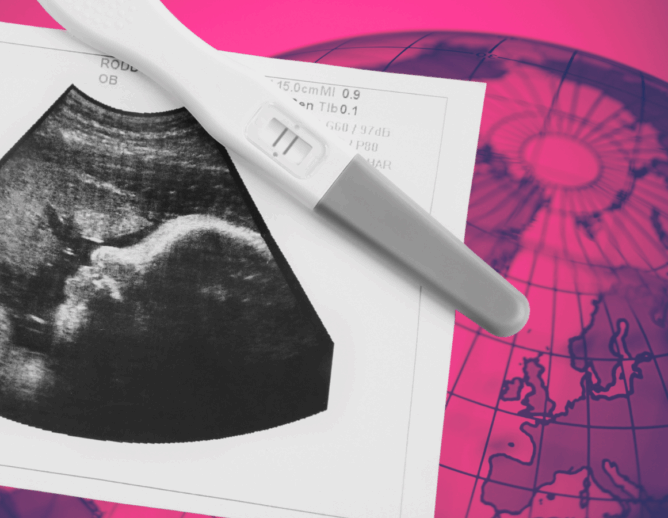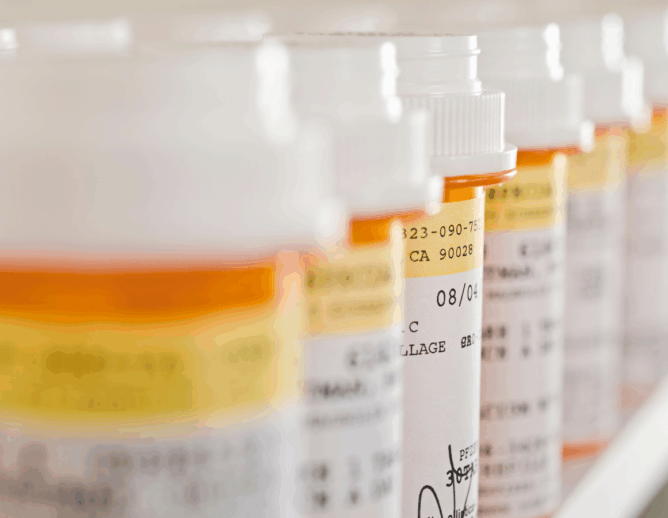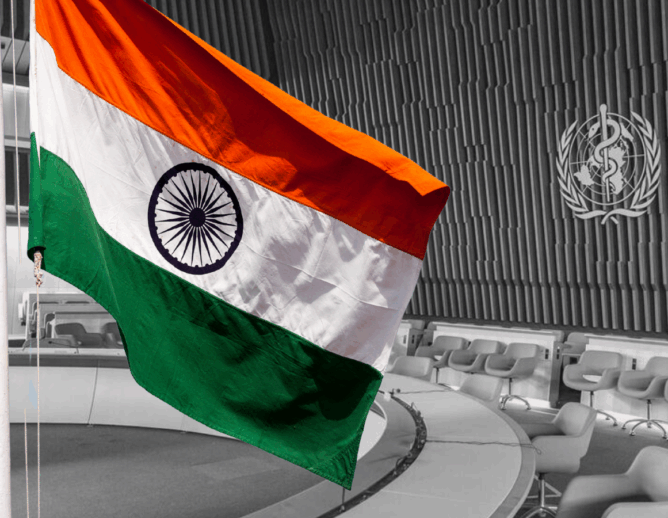Vaccination for mpox kicked off in the Democratic Republic of the Congo (DRC) on October 2024, almost two years after the outbreak was declared in December 2022 and five years after the U.S. FDA approved the first mpox vaccine in 2019. Nigeria was the first to receive the vaccine in Africa in August 2024, with 10,000 doses donated by the U.S. Agency for International Development (USAID). Since then, the U.S. Department of Health and Human Services has also donated vaccines to DRC. However, the recent and sudden stop work orders on U.S. foreign aid have halted the process as USAID was in charge of facilitating the transfer.
In the past year, 22 countries have reported 21,598 confirmed cases of mpox, including 81 deaths. This disruption isn’t just a setback for Nigeria and the DRC — it’s a warning sign for global health more broadly. In many cases, funding halts have led to the immediate closure of clinics, disrupted critical research programs, and left many without access to life-saving medicines — all of which cut communities off from essential care. Here, we review and analyze just how USAID funding has impacted global health initiatives and challenge the misconception that such investments are expendable.
Earlier this month, a judge put a temporary restraining order on the Department of Government Efficiency (DOGE), declaring DOGE likely violated the Constitution’s appointments clause and separation of powers by ordering the dismantling of USAID — continuing the legal and political struggle over the future of U.S. global health funding. The government already announced that it is terminating more than 90% of USAID’s foreign aid contracts. At the same time, the U.S. Congress continued funding tens of billions in aid through USAID in the 2025 Continuing Resolution spending bill just last month. This legal tug-of-war is far from over, and the future of U.S. global health funding remains deeply uncertain as the different branches of the U.S. government chart competing paths.
News from across the world shows how the cuts already have far-reaching implications. Reports from South Africa, Uganda, Mozambique, and the DRC show clinics running out of essential medications, HIV/AIDS programs facing collapse, and research initiatives grinding to a halt. UNAIDS estimates 2,000 new HIV infections a day globally and a 10-fold increase in HIV-related deaths if funding frozen by the United States is not restored or replaced. In Ethiopia alone, over 270,000 people receiving HIV treatment now face an uncertain future. Meanwhile, in Malawi and Benin, vaccination campaigns risk being abandoned, reversing decades of public health progress.
According to Atul Gawande, former head of global health and assistant administrator of USAID, the current administration has terminated multiple contracts that address a wide breadth of critical issues, including malaria prevention efforts, tuberculosis (TB) programs, supply of essential medicines for maternal and child health, outbreak prevention and response in over 50 countries, maternal and child health care services in Afghanistan, and water and sanitation services to displaced people in DRC. Efforts to reduce the HIV/AIDS burden in at least 53 countries would also be impacted.
Drawing from data from foreignassistance.gov, we analyzed all USAID financial obligations that would potentially be impacted by the funding halt after January 20, 2025. Our analysis shows that the greatest number of programs affected will be program obligations in health (Figure 1).
Figure 1
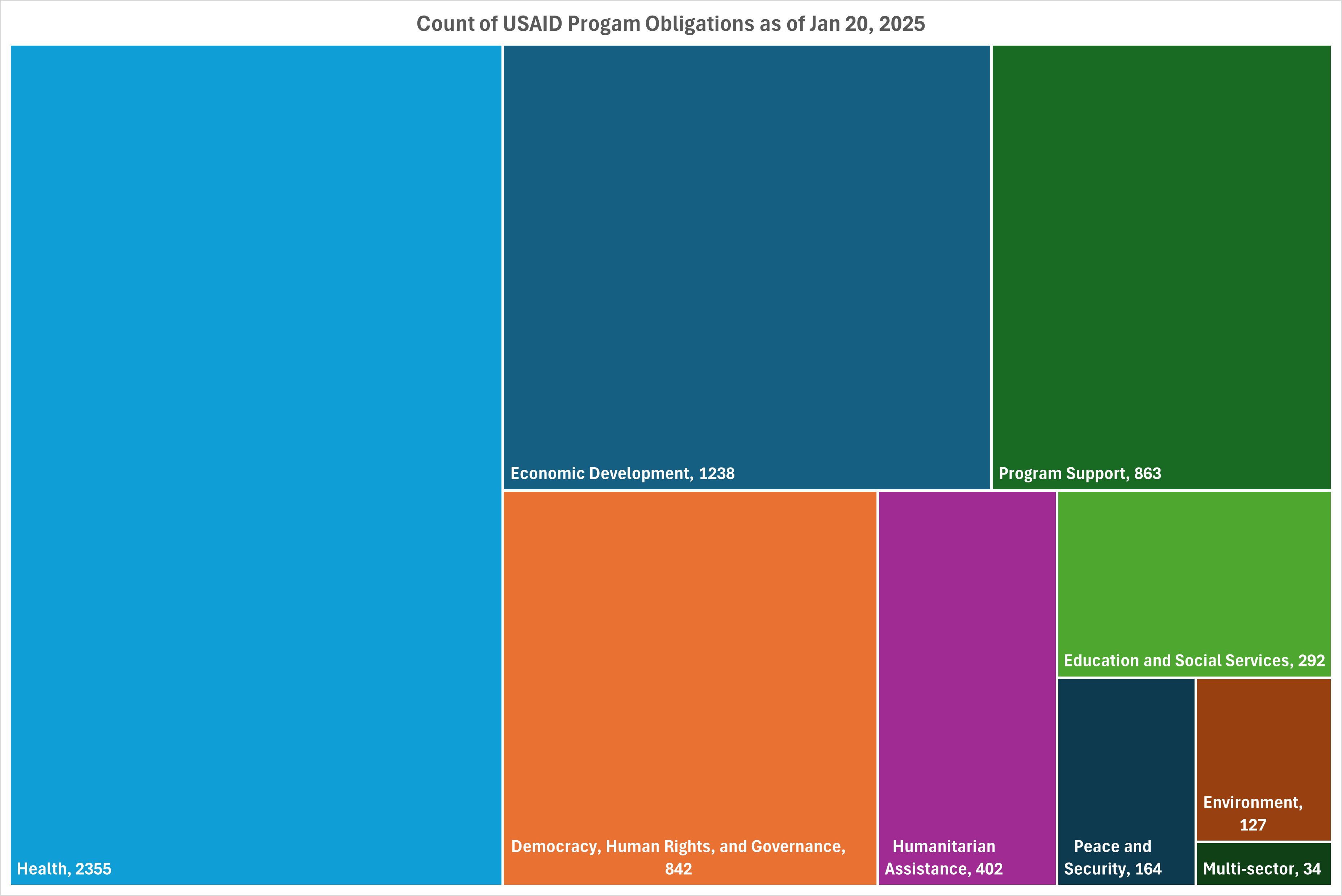
Source: foreignassistance.gov
Among all obligations, 53% are in the sub-Saharan Africa region (Figure 2). These include programs for polio immunization, Ebola prevention, treatment and prevention of neglected tropical diseases, and the provision of critical and essential medicines to displaced and vulnerable populations. This data contradicts DOGE’s misleading claims about programs being “wasteful” and shows that the agency picks examples from a small slide of overall aid funding.
Figure 2:
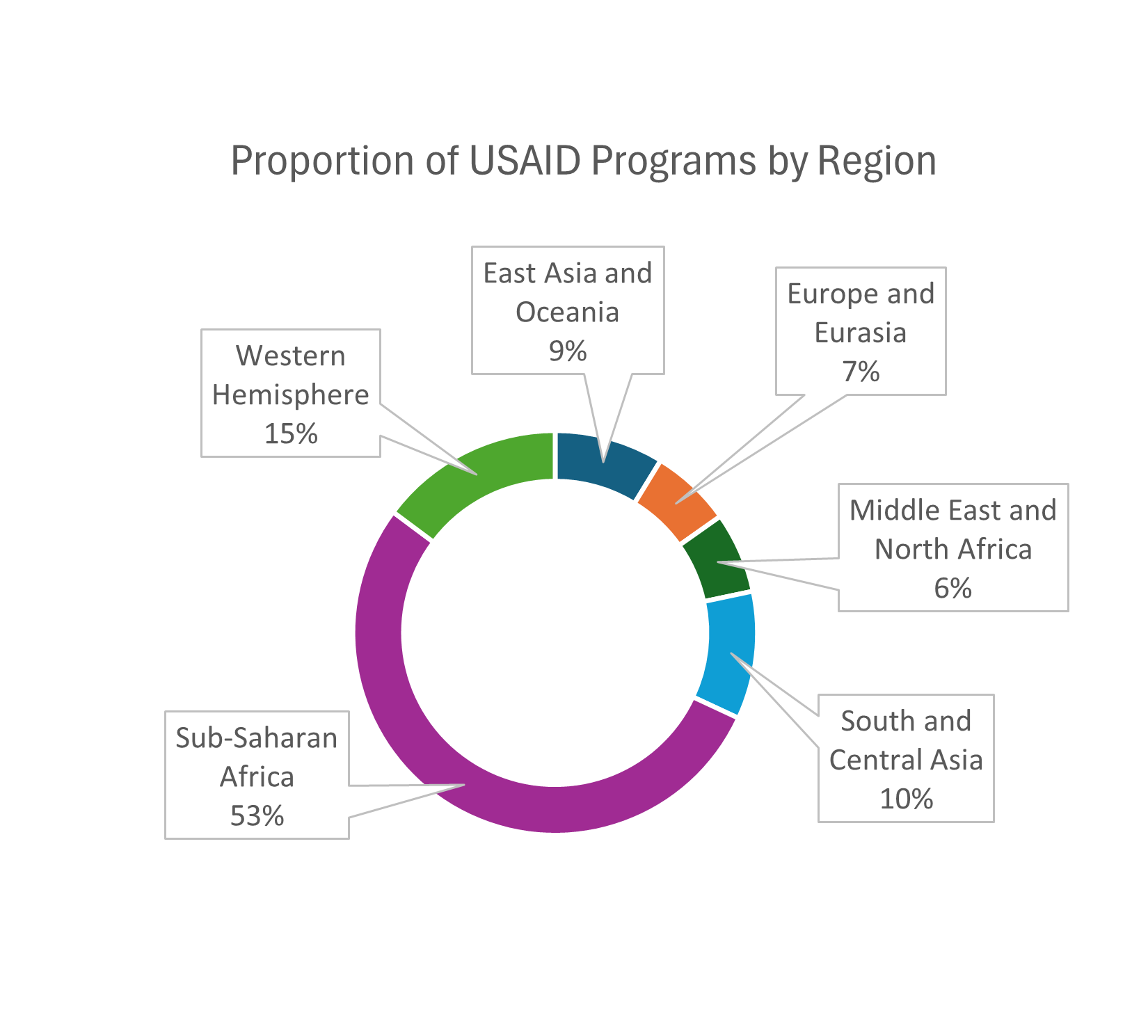
Source: foreignassistance.gov
On the whole, USAID funding addresses major killers and causes of poor health. Our analysis of USAID investments in the last 5 years shows that they go overwhelmingly to the major disease areas driving the highest mortality in each region, as per the latest WHO region-wise global health estimates (2021) (Figure 3). For example, in 2021, USAID invested in 5 of the top 10 disease burden areas in the WHO African Region, which include tuberculosis, HIV/AIDS, malaria, reproductive health care, and COVID-19.
USAID has also collaborated in multiple clinical trials focused on high disease burden areas, including a shorter, safer, and more tolerable treatment regimen for children with TB. The clinical trials also aim to improve cervical cancer screening and treatment strategies among HIV-positive women, improve access and increase long-term adherence to PrEP, develop an HIV vaccine using mRNA technology, and develop community-based interventions that can improve maternal and child nutrition.
Figure 3:

Source: WHO Global Health Estimates (GHE) 2021, foreignassistance.gov
The funding cut would also severely impact the U.S. President’s Emergency Plan for AIDS Relief (PEPFAR) initiatives, resulting in the shutdown of multiple clinics across sub-Saharan Africa. According to estimates by amfAR, the Foundation for AIDS Research, each day of the freeze, about 220,000 people — including over 7,000 children — will be unable to access their needed treatments.
Along with HIV testing, PEPFAR also supports clinics in providing antiretroviral drugs to over 200,000 people living with HIV, including pregnant women and adolescents. These initiatives also provide cervical cancer testing for women living with HIV, nutrition, access to school, and psychosocial support to orphans and vulnerable children (with the aim of mitigating the impact of HIV), and post-violence care for survivors of gender-based violence. Thousands are expected to lose access to critical care as a direct result of these funding cuts. Figures 4 and 5 provide further details of some areas that will be impacted.
Figure 4:

Figure 5:
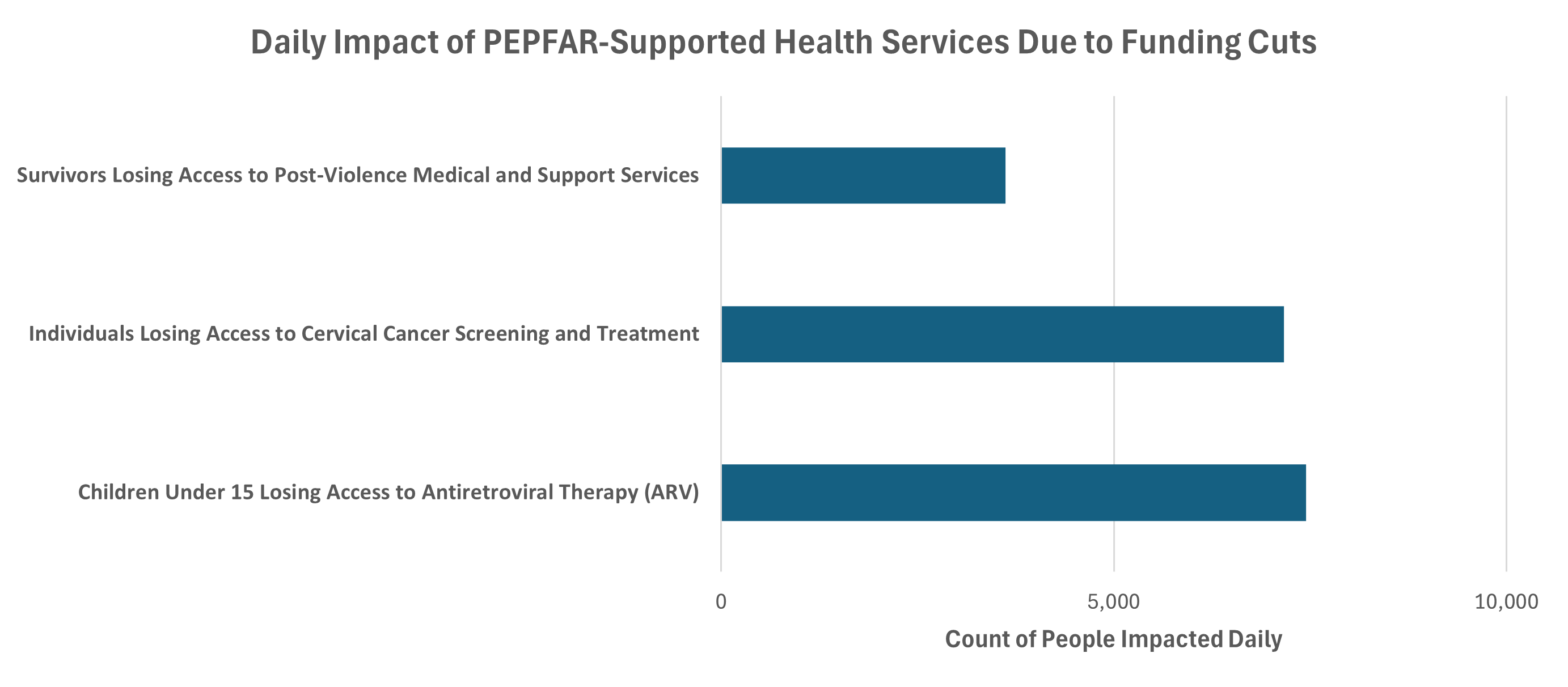
Source: amfAR
We are now witnessing the ripple effects of these funding cuts to U.S. foreign aid — from HIV/AIDS treatment to maternal health care to outbreak prevention to essential vaccinations. Decades of progress are now at risk of unraveling with the threat of the most vulnerable populations being left behind.
The U.S. government has the power — and the responsibility — to reverse course. The funding cuts are beyond just a policy misstep; they are a profound breach of trust to the very communities these aid programs were designed to protect, including members of LGBTQI+ populations, people who use drugs, women without access to affordable contraception, and sex workers.
The U.S. government must urgently reinstate funding to ensure the most vulnerable across the world continue to receive the critical care they need.
DISCLAIMER: The views and opinions expressed in this piece are those of the authors and do not reflect the views of the O’Neill Institute.

